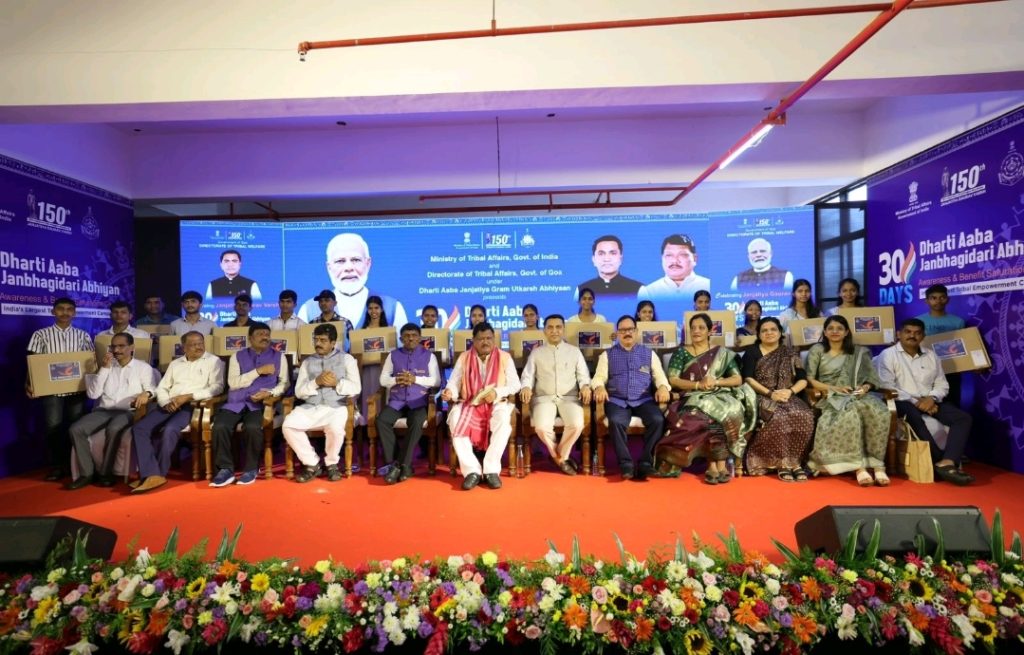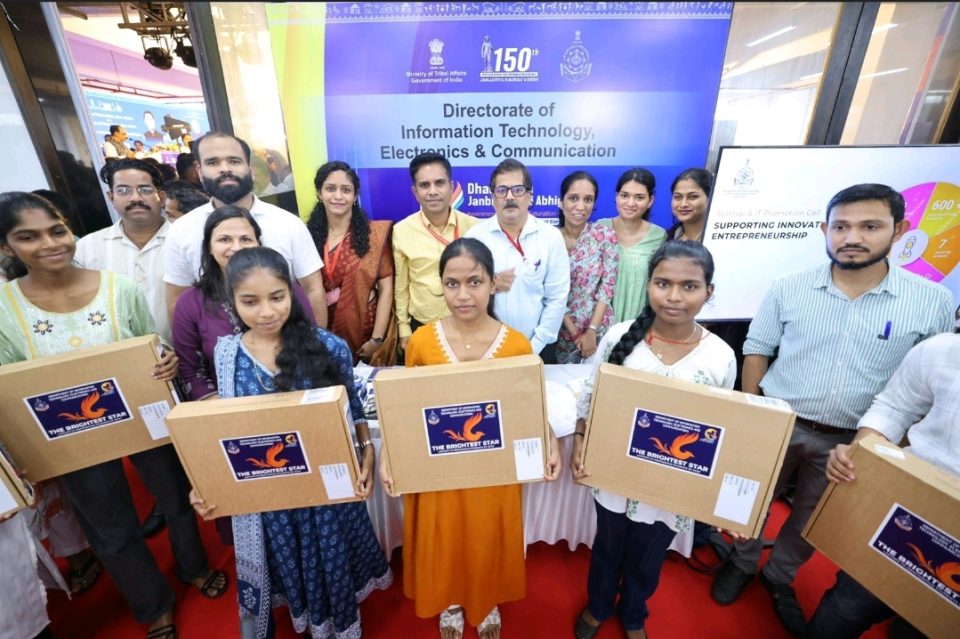Beyond Laptops: How Goa’s Tribal Empowerment Camp Redefines Citizen Experience
Picture this: You’re a tribal student in Goa, dreaming of digital opportunities. However, accessing government services feels overwhelming. Furthermore, technology seems distant from your daily reality. Then, something remarkable happens. The government brings services directly to your doorstep in a flawless manner like Goa’s Tribal Empowerment Camp.
When Government Meets You Where You Are
Last week, Goa’s Department of Information Technology, Electronics & Communications (ITE&C) demonstrated exceptional citizen experience design. Instead of expecting citizens to navigate complex bureaucratic processes, they flipped the script entirely. Moreover, they transformed service delivery into a community celebration.
The Sanguem Tribal Empowerment Camp, held on July 4th, 2025, exemplified this approach perfectly. Additionally, it showcased how thoughtful planning creates meaningful citizen interactions. The event distributed 22 laptops to meritorious ST and SC students. Nevertheless, the real story lies in the comprehensive experience they crafted.
Creating Connections Through Comprehensive Service Design
Traditional government services often operate in isolation. Consequently, citizens must visit multiple offices for different needs. However, Goa’s approach breaks down these silos systematically. The tribal empowerment camp integrated digital services with healthcare, welfare support, and community engagement simultaneously.
For instance, while students received laptops, families accessed free health screenings nearby. Meanwhile, officials explained digital literacy programs to interested community members. Therefore, every family member found relevant services within the same venue.
This integrated approach reduces citizen effort significantly. Furthermore, it demonstrates genuine understanding of community needs. Subsequently, trust between government and citizens naturally increases.
The Power of Personalized Government Interactions
Most government interactions feel impersonal and transactional. However, ITE&C officials prioritized one-on-one conversations with community members. They established dedicated stalls specifically for these personal interactions. Additionally, they explained digital schemes in accessible language.
These face-to-face conversations serve multiple purposes effectively. First, they build trust between officials and citizens. Second, they identify specific community needs accurately. Third, they ensure citizens understand available services completely.
Moreover, this personalized approach addresses the digital divide thoughtfully. Many tribal communities lack exposure to technology. Therefore, personal explanations become crucial for successful adoption.
Building Digital Infrastructure That Citizens Actually Use
Distributing laptops represents just the beginning of meaningful digital inclusion. Consequently, Goa’s strategy extends far beyond hardware distribution. The department simultaneously develops supporting infrastructure and training programs.
The Har Ghar Fibre and BharatNet 3.0 initiatives expand connectivity across rural areas. Meanwhile, the ITKC Program provides ICT training for youth and homemakers. Additionally, platforms like Goa Online and Gramin Mitra offer over 200 essential e-services.
This comprehensive approach ensures citizens can effectively use their new devices. Furthermore, it creates sustainable digital ecosystems within communities. Therefore, technology becomes genuinely empowering rather than merely symbolic.
Measuring Success Through Community Impact
Traditional government metrics focus on outputs like laptops distributed or events conducted. However, citizen experience demands different success measurements. The real question becomes: How do these initiatives improve daily lives?
The camp’s integrated health services provide immediate value to families. Free screenings, TB check-ups, and PMJAY registrations address pressing healthcare needs. Simultaneously, digital tools open educational and employment opportunities for students.
This dual approach creates both immediate satisfaction and long-term empowerment. Consequently, citizens see tangible benefits from government investments. Furthermore, they develop positive associations with digital services.
Lessons for Scaled Citizen Experience Excellence
Goa’s tribal empowerment initiative offers valuable insights for government service design. First, successful citizen experience requires genuine understanding of community contexts. Second, integrated service delivery significantly reduces citizen effort and frustration.
Third, personal interactions build trust more effectively than digital-only approaches. Fourth, comprehensive support systems ensure sustainable technology adoption. Fifth, measuring community impact drives better policy decisions.
These principles apply beyond tribal communities or technology initiatives. Moreover, they demonstrate how government can become truly citizen-centric rather than process-centric.
The Analytical Framework Behind Success
From a citizen experience perspective, this initiative demonstrates several critical design principles effectively. The department applied journey mapping to understand citizen touchpoints comprehensively. They identified pain points in traditional service delivery methods systematically.
Subsequently, they designed solutions addressing multiple needs simultaneously. The co-location strategy reduces travel requirements and time investments. Meanwhile, the personal interaction model builds confidence in digital services.
Furthermore, the infrastructure development ensures long-term service sustainability. This prevents the common problem of abandoned technology initiatives. Therefore, citizens experience continuous value rather than one-time benefits.

Building Momentum for Systematic Change
This single event represents broader transformation in government service philosophy. The success demonstrates that citizen-centric approaches generate better outcomes than traditional methods. Moreover, it proves that comprehensive service design is both feasible and effective.
The initiative forms part of India’s 150 years of Janjatiya Gaurav celebrations. However, its impact extends far beyond ceremonial recognition. It establishes new standards for government-citizen interactions nationwide.
As other states observe Goa’s success, similar initiatives will likely emerge. Therefore, this event may catalyze widespread improvements in citizen experience across India. The ripple effects could transform how government serves its most vulnerable populations.
Looking Forward: Sustainable Digital Empowerment
The true test of this initiative lies in its long-term community impact. Will students use their laptops for educational advancement? Will families engage with digital services regularly? Will the community develop sustainable digital practices?
Early indicators suggest positive outcomes. The comprehensive support structure increases adoption likelihood significantly. Furthermore, the personal relationships built during the camp create ongoing connection points.
Ultimately, Goa’s tribal empowerment camp demonstrates that exceptional citizen experience requires both strategic thinking and genuine care. When government prioritizes citizen needs over internal processes, remarkable transformation becomes possible.


